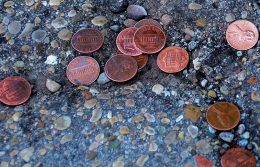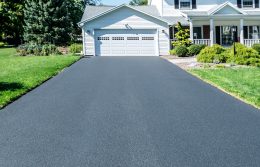How to Compost at Home
Avid gardeners have a secret: their own trash. Food scraps, paper trash, and other organic materials that normally end up in the bin can enrich your garden soil with vital nutrients that help plants thrive.
While you can purchase bags of compost at most gardening stores, making your own is an easy and economical way to boost the growing potential of your garden’s soil while helping to cut down on your landfill contribution.
Fortunately, creating compost is one of the easiest garden projects out there, and a good compost pile can be nurtured with minimal effort. In fact, after reading this quick guide, you’ll be able to start working on your fresh compost immediately.
How Compost Works
Composting occurs naturally throughout all ecosystems. It is simply the slow breakdown of organic material that transforms those substances into a carbon- and nitrogen-rich dirtlike mix. Compost consists of two essential ingredients: green materials and brown materials.
- Green materials are nitrogen-rich substances — think foodstuffs like banana peels and apple cores, coffee grounds and eggshells.
- Brown materials are carbon-rich substances — think leaves, tree bark, shredded newspapers, and cardboard.
Collected together, with a little heat and moisture added, these two kinds of materials attract microbes and bacteria, which break them down into their essential components. Slowly, your trash is transformed into a thick, dirtlike substance rich with the carbon and nitrogen that help sustain soil in a healthy garden.
What to Compost
Here’s a quick guide to what can and can’t go in your compost. To help your compost break down, make sure you’re adding in small, broken-up bits and pieces. Virtually anything that comes from the ground can go back into the ground, but there are a few key things to avoid composting.
Do compost:
- Food scraps: Some fruit peels (noncitrus), vegetables, and eggshells are all great.
- Coffee grounds and tea leaves: Throw them in!
- Paper: Newspapers, scrap paper, and junk mail (as long as it’s recyclable) finally have a place to go.
- Manure: Just like manure is great for your yard, horse, cow, and chicken droppings are great for composts.
- Sawdust: As long as it’s from natural, untreated wood, your leftover shavings are great to throw in.
Don’t compost:
- Pet poo: Unlike manure, dogs and cats have microorganisms and parasites that you don’t want anywhere near your garden.
- Tea bags and coffee filters: While coffee grounds and tea leaves are fine, these products are not always made with materials that can be broken down through composting.
- Citrus peels and onions: The acid in citrus peels and onions can kill the healthy microorganisms that break down compost material.
- Fish and meat: Unless you want your compost to be the neighborhood gathering spot for all the cool rats and raccoons, best to keep these smelly items out of the bin.
- Dairy and eggs: Same principle.
- Treated paper: Sadly, once a paper manufacturer adds that glossy or color-coated treatment to the paper, the tree-based material is tainted with mysterious chemicals and toxins that won’t do well in a compost.
- Sawdust from treated wood: Make sure the sawdust isn’t from store-bought wood that has been treated. This will contain harmful toxins that could leach into your soil.
Choosing Your Compost Style
Composting can vary widely, and gardeners opt for a variety of techniques and equipment. You can choose to do whatever fits your lifestyle and needs. Here are a few starter ideas:
- The Pile: Composting doesn’t require any special equipment. In fact, you can start simply by starting a pile in your yard. Toss in green and brown materials, turn the pile periodically, and keep it moist. What’s most important about compost is the material mix, aeration, heat, and moisture.
- The Tumbler: Large, enclosed barrels can be turned to aerate the compost to trap heat and moisture.
- Rotatable Bins: These bins consist of semienclosed piles and allow gardens to work on three compost piles at once. Because it can take months for some materials to break down, the rotation model allows gardeners to have an established pile of compost ready for use, a second pile of compost in the process of breaking down, and a third pile that’s still being added to.
Regardless of the system you choose, you’ll find that starting a compost is a great way to help boost the health of your soil while cutting down on your trash. Find more homemade gardening hacks here.
© 2020 Texas Farm Bureau Insurance



